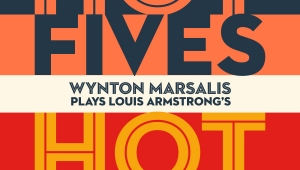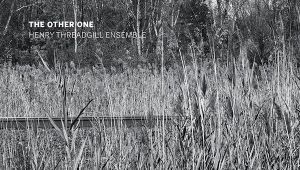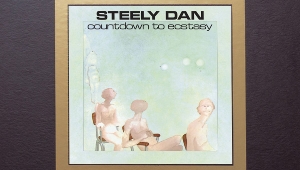| Columns Retired Columns & Blogs |
Recording of May 1994: Gershwin: Original Works and Transcriptions for Solo Piano
GERSHWIN: Piano Music
Rhapsody in Blue (solo piano version by Gershwin); 3 Preludes; "Sleepless Night"; Impromptu in 2 Keys; Song Transcriptions: "Sweet and Low-Down," "Maybe," "Clap Yo' hands," "So am I," "Looking for a Boy," "Someone to Watch Over Me," "That Certain Feeling"; Second Rhapsody (solo piano version by David Buechner)
David Buechner, piano
Connoisseur Society CD 4191 (CD only). Patricia A. Duciaume, eng.; E. Alan Silver, prod. D?D. TT: 59:26
Footnote 1: The sound is that of a real piano in a real hall. While listeners used to the over-close piano sound on non-classical recordings might find it too reverberant, on a good system that reverberation can be heard to be delightfully coherent with the direct sound of the instrument.—John Atkinson
Rhapsody in Blue (solo piano version by Gershwin); 3 Preludes; "Sleepless Night"; Impromptu in 2 Keys; Song Transcriptions: "Sweet and Low-Down," "Maybe," "Clap Yo' hands," "So am I," "Looking for a Boy," "Someone to Watch Over Me," "That Certain Feeling"; Second Rhapsody (solo piano version by David Buechner)
David Buechner, piano
Connoisseur Society CD 4191 (CD only). Patricia A. Duciaume, eng.; E. Alan Silver, prod. D?D. TT: 59:26
Having greatly enjoyed David Buechner's playing on two previous Connoisseur Society discs—Stravinsky's three Petrouchka movements and works by Busoni on CD 4174, and a Brahms and Dvorák recital on CD 4179—I found the same scintillating qualities that so appealed to me on his most recent recording as well. If hearing the Rhapsody in Blue in a solo piano treatment seems a less than ideal way of savoring Gershwin's ubiquitous piece, the colorful orchestral effects having been absorbed into the keyboard part, let me hasten to assure you that I have never heard a more effective or stylish treatment than this one here. This may not be a first recording of the solo version of the work (Norman Krieger recorded it very well just a few years ago on Stradivari Classics, and quite a few others are available).
But the Second Rhapsody, in Buechner's own transcription, is, in fact, claimed as a first. The piece, despite the effects of numerous champions, has never achieved the popularity of its predecessor, and this in spite of Gershwin's own enthusiasm for it. Buechner's advocacy has the merit of considerable panache, though, personally, and on entirely musical grounds, I have never been roused to great enthusiasm for the piece.
It is all too easy to play the second of the three Preludes in sentimental fashion, a most flagrant example being the Leonard Bernstein taffy-pull on DG. Buechner, in a wide field of marvelous performances, ranging from Gershwin's to William Bolcom's, holds his own nicely, avoiding the pitfalls of exaggeration; the playing here, as in the rest of the album, bounces wittily, even with cheeky insouciance in the fast pieces.
Not least of the pleasure this album gives comes from the song transcriptions; not the published short ones, but those that Gershwin authority Artis Wodehouse transcribed from the composer's own disc recordings of 1926 or, in the case of So Am I, from a piano roll. Technically, Buechner really sizzles; just listen to the energy he imparts to Rhapsody in Blue (in which, incidentally, the pianist restores a few brief lead-in passages later excised by the composer). Altogether, this is a fine disc in every way, though, since the timing is not especially full, I wish that a few other items, such as Jasbo Brown Blues, had been included as well. Alan Silver's excellent, not-too-close, not-too-distant reproduction (footnote 1), fully up to his well-earned reputation for piano sonics that sound natural, warm, and vibrant, is an added plus.—Igor Kipnis
Footnote 1: The sound is that of a real piano in a real hall. While listeners used to the over-close piano sound on non-classical recordings might find it too reverberant, on a good system that reverberation can be heard to be delightfully coherent with the direct sound of the instrument.—John Atkinson
- Log in or register to post comments



































